- info@chinaadventure.org
- 86-18008011324
- Search
The Terracotta Army is a collection of terracotta sculptures depicting the armies of Qin Shi Huang, the first Emperor of China. It is a form of funerary art buried with the emperor in 210–209 BCE with the purpose of protecting the emperor in his afterlife.
The figures, dating from approximately the late third century BCE, were discovered in 1974 by local farmers in Lintong County, outside Xi'an, Shaanxi, China. The figures vary in height according to their roles, with the tallest being the generals. The figures include warriors, chariots and horses. Estimates from 2007 were that the three pits containing the Terracotta Army held more than 8,000 soldiers, 130 chariots with 520 horses, and 150 cavalry horses, the majority of which remained buried in the pits near Qin Shi Huang's mausoleum. Other terracotta non-military figures were found in other pits, including officials, acrobats, strongmen, and musicians.
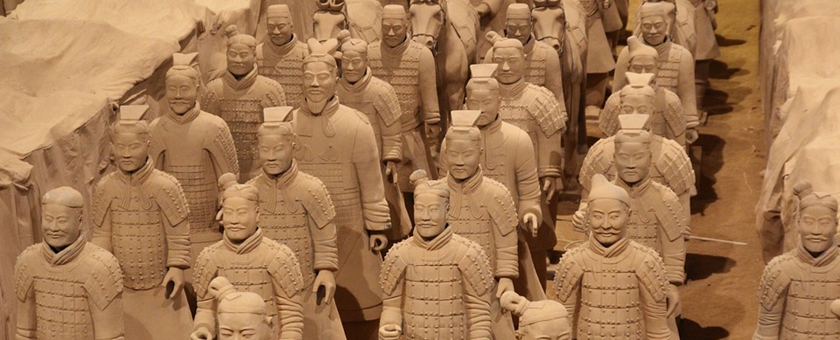
Pits
Four main pits approximately 7 metres (23 ft) deep have been excavated. These are located approximately 1.5 kilometres (0.93 mi) east of the burial mound. The soldiers within were laid out as if to protect the tomb from the east, where the Qin Emperor's conquered states lay.
Pit 1, which is 230 metres (750 ft) long and 62 metres (203 ft) wide, contains the main army of more than 6,000 figures. Pit 1 has eleven corridors, most more than 3 metres (10 ft) wide and paved with small bricks with a wooden ceiling supported by large beams and posts. This design was also used for the tombs of nobles and would have resembled palace hallways when built. The wooden ceilings were covered with reed mats and layers of clay for waterproofing, and then mounded with more soil raising them about 2 to 3 metres (6 ft 7 in to 9 ft 10 in) above the surrounding ground level when completed.
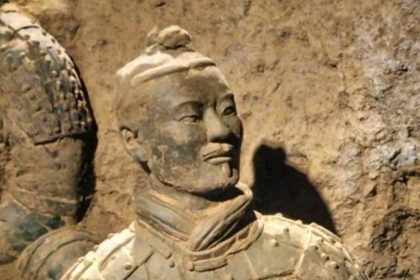

Others
Pit 2 has cavalry and infantry units as well as war chariots and is thought to represent a military guard. Pit 3 is the command post, with high-ranking officers and a war chariot. Pit 4 is empty, perhaps left unfinished by its builders.
Some of the figures in Pits 1 and 2 show fire damage, while remains of burnt ceiling rafters have also been found. These, together with the missing weapons, have been taken as evidence of the reported looting by Xiang Yu and the subsequent burning of the site, which is thought to have caused the roof to collapse and crush the army figures below. The terracotta figures currently on display have been restored from the fragments.
Other pits that formed the necropolis have also been excavated. These pits lie within and outside the walls surrounding the tomb mound. They variously contain bronze carriages, terracotta figures of entertainers such as acrobats and strongmen, officials, stone armour suits, burial sites of horses, rare animals and labourers, as well as bronze cranes and ducks set in an underground park
The terra-cotta army-pits2 The terra-cotta army-pits3
Best time to visit Terra Cotta Army
As it is inside construction, it is suitable to visit whole year around! Whether it rains or snows will spoil the visit. However, if you want to visit some nearby site such as Bangpo Museum, Huaqing Pool, a sunny weather is preferable. When you visit Terra Cotta, nearby places that you can visit together
Recommend Xian-Terracotta Army Tors:
Terra Cotta Warriors and Horses Museum One Day Tour
Terra Cotta Warriors and Big Wild Goose Pagoda One Day Tour
Xian 4 Days Tour
Banpo Museum
The Banpo Museum (is a museum in Xi'an, Shaanxi, China. The museum houses artifacts from the archaeological site of Banpo. The museum gives access to the excavated buildings, has a collection of artifacts from the site, and also has several reconstructed houses designed to resemble the Neolithic settlement.
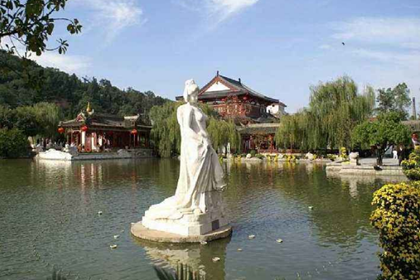
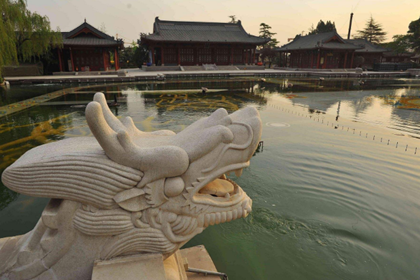
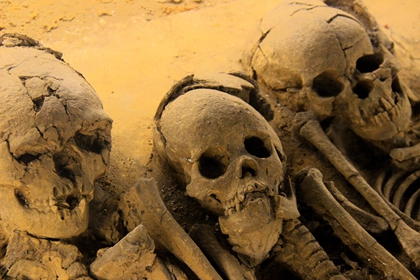
Huaqing Pool
Huaqing Pool or the Huaqing Hot Springs are a complex of hot springs located in an area characterized by mild weather and scenic views at the northern foot of Mount Li, one of the three major peaks of the Qinling.
huaqing pool huaqing pool
we’ll reply you in 24 hours!
Copyright © 2012-2024 All Rights Reserved to chinaadventure.org